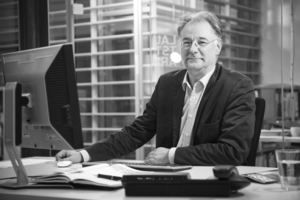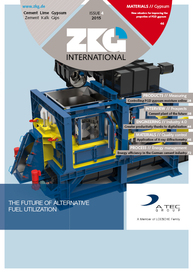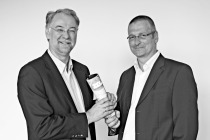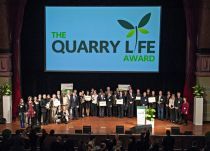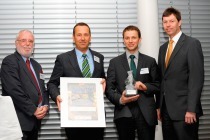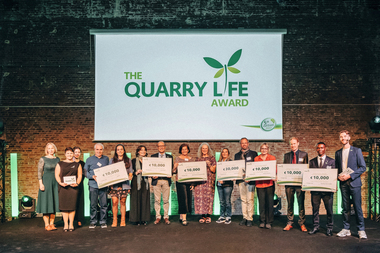Flowing smoothly…
Starting this next quarterly sequence again with raw material, you will find a report from the International Quarry Life Award where the winners are honoured at a ceremony held in Prague. This Award generates innovative ideas for protecting biodiversity at quarry sites all around the world.
Following in the process line, crushers do a good job over a long time, but from time to time they have to be replaced. After tests were performed with the original limestone material the previous crusher was replaced during a scheduled winter shut-down. The additional challenge to reduce undersized particles, was found in a proper arrangement and mounting in the existing plant. Processing chalk represents a major challenge for machinery and conveyor systems. Large quantities of dust and dirt create difficult conditions for the machines and, in particular, for their bearings. Here, a paper examines how bearings need to be lubricated regularly, despite the fact that the conveyors are usually more than several kilometers long and it is almost impossible to do this manually.
Also in connection with quarrying, a monitoring solution from a special software are shown here to help mining machinery manufacturer to increase the payload of mining truck to transport ever higher loads of raw materials.
And of course, the paper dealing with the savings potential for power, fuels and CO2 emissions in the German cement industry will be finished in part 2 with the analysis and evaluation.
Flue-gas desulfurization (FGD) gypsum from the wet cleaning of coal fired plants is a solid starting product for a lot of different applications in manufacturing cement or in building materials. But, the desulphurization process has to be controlled by moisture monitoring before further use. This paper introduces a new online moisture measurement device and its results.
To follow that line, FGD gypsum has a low price and abundant availability, which makes the material a good potential for application after calcination to ß-calcium sulfate hemihydrate (ß-HH). However, the very short setting time of this binder system is becoming a problem. In the paper presented here, experiments with different retarders show the influences on setting and hardening processes. The effects on setting time, crystal size, morphology and its solution-precipitation processes are detected by X-Ray Diffraction (XRD), scanning electron microscope (SEM) and a digital microscope.
Finally, ZKG INTERNATIONAL was given the opportunity to participate in a workshop interview to talk about the cement plant of the future.
As it has been doing for more than 100 years, ZKG INTERNATIONAL will also continue publishing highly relevant information in technical reports by educated engineers for educated engineers in the binders manufacturing industry. Pseudo-experts and gurus will remain out here.
And at the end, after accepting a new challenge, I would like to thank you, dear readers and you, dear authors for all the open discussions and friendly support. The editorial responsibility I have handed over to Ms. Anett Fischer, who will also be assisted by the known editorial team of Ms. Anke Bracht and Mr. Holger Reiff and together they will all keep everything flowing smoothly…
Tschüss, and all the best!
Dr. Hubert Baier

